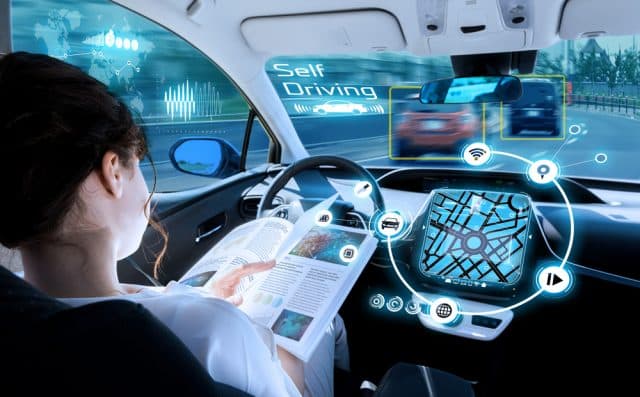The top disruptive autonomous vehicle technologies in 2021

Years ago, autonomous vehicles were just a concept. Today, they’re much more attainable and already on the road in some places. The industry is developing, though, and 2021 is on track to see countless improvements.
The following five disruptive technologies will improve the autonomous vehicle landscape and bring them even closer to full realization.
1. Cybersecurity
Data has always been something to protect. However, as new technologies come about, so does the amount of data automotive companies must defend for themselves and their customers.
Moreover, the COVID-19 pandemic has drastically increased cybercriminal activity due to reliance on technology and the internet for information and resources.
Since autonomous vehicles rely on integrated technology and data, they now require more protection. For instance, the car itself may run on private networks that transfer information to a data center. If a cybercriminal taps into that network, they could potentially uncover valuable information.
Throughout 2021, automakers should focus on increasing protections for this valuable data.
2. Digital Marketing
As the pandemic changed daily life, commerce changed with it. E-commerce increased by over 45 percent from its standing in 2019. As consumers turn to the internet for shopping, automakers should do the same. For now, most autonomous vehicle deals will be for B2B commerce, and digital marketing will come in handy here.
E-commerce is faster and safer than in-person marketing and sales. It opens up opportunities for autonomous vehicles to gain traction and become more of a norm in the industry.
In addition, it’s important to remember that digital marketing involves more than just the sales of the vehicles themselves. Autonomous vehicle companies can use new commerce methods to market insurance or individual parts.
3. Sensory Systems
Vehicles that use sensory systems are not necessarily a new dynamic. However, the newest sensory systems for autonomous vehicles are more advanced than they’ve ever been. They use artificial intelligence (AI), sensors, and radar to get around without causing accidents.
The sensors and cameras provide an image of the surrounding environment as the car moves, and the radar can measure velocity. Newer tech like Lidar is now adding precision for performance and reliability. In various tricky weather and light conditions, Lidar will help the car navigate.
It’s technology like this that helps bring forth the idea that autonomous vehicles could reduce accidents on the road with the right sensory systems in place.
4. Ridesharing Apps
Ridesharing apps have already taken off in the U.S. as practical and accessible ways to get around. Ridesharing is still evolving, though, and is already integrating with autonomous vehicles. Notably, Waymo has been operational on a small scale in Phoenix since October 2020.
These vehicles help riders get to their destination, just as a taxi, Uber, or Lyft would. This dynamic would also fit well with food delivery if companies head in that direction.
Autonomous vehicles could also add a level of physical safety during the ride now that the pandemic encourages limited contact between people. Having no driver results in less contact.
5. 3D Printing
3D printing is an industry on its own, and it has taken off fast. For autonomous vehicles, this form of printing may be a game-changer. It’s fast, practical, and affordable. As autonomous vehicle companies continue to fine-tune their models, they can 3D print prototypes instantly and cost-effectively without waiting for the part to come through the supply chain.
With 3D printing, manufacturers can print objects big and small. Newer parts, like protective cases for sensory systems, may be a hassle to obtain. 3D printing provides them right away.
The main obstacle here will be to first, of course, have a 3D printer. Then, manufacturers can focus on ways to cut costs while 3D printing.
A Changing Landscape
These disruptive technologies are what will ultimately make autonomous vehicles more common and more accessible in the industry. The current small-scale uses of these vehicles are a good start. From improved cybersecurity practices to 3D printing, the entire landscape can shift to include the most innovative technologies for autonomous vehicles yet.
Photo Credit: metamorworks/Shutterstock

Devin Partida writes about AI, apps and technology at ReHack.com, where she is Editor-in-Chief